-
EXECUTIVE SUMMARY 16
-
MARKET ATTRACTIVENESS
- GLOBAL MULTI-LAYER CRYOGENIC INSULATION MARKET, BY TYPE 19
- GLOBAL MULTI-LAYER CRYOGENIC INSULATION MARKET, BY END USE 20
-
ANALYSIS 18
-
GLOBAL MULTI-LAYER CRYOGENIC INSULATION MARKET, BY REGION 21
-
MARKET INTRODUCTION
-
DEFINITION 22
-
SCOPE OF THE STUDY 22
-
MARKET STRUCTURE
-
RESEARCH METHODOLOGY 24
-
RESEARCH PROCESS 24
-
PRIMARY
-
RESEARCH 25
-
SECONDARY RESEARCH 26
-
MARKET SIZE ESTIMATION 27
-
TOP-DOWN AND BOTTOM-UP APPROACH 27
-
FORECAST MODEL 28
-
LIST
-
OF ASSUMPTIONS & LIMITATIONS 29
-
MARKET DYNAMICS 30
-
INTRODUCTION
-
DRIVERS 31
- RISING DEMAND FOR LNG AS FUEL 31
- USE
- USE OF CRYOGENIC INSULATION IN THE SHIPPING INDUSTRY 32
-
OF SUPERINSULATION IN STORAGE AND TRANSPORTATION OF GASES SUCH AS OXYGEN AND NITROGEN
-
RESTRAINTS
- VOLATILE RAW MATERIAL PRICES 33
-
OPPORTUNITIES 34
-
INCREASING USE OF CRYOGENIC INSULATION IN SPACE APPLICATIONS 34
-
TREND 35
- APPLICATIONS IN SUPERCONDUCTING DEVICES 35
-
-
MARKET FACTOR
-
ANALYSIS 36
-
SUPPLY CHAIN ANALYSIS 36
- RAW MATERIAL SUPPLIERS
- MULTI-LAYER CRYOGENIC INSULATION PRODUCERS 38
- DISTRIBUTION
- END USE 38
-
GLASS 37
-
PERLITE 38
-
& SALES CHANNEL 38
-
PORTER'S FIVE FORCES ANALYSIS
- THREAT OF NEW ENTRANTS 41
- BARGAINING POWER OF SUPPLIERS
- THREAT OF SUBSTITUTES 41
- BARGAINING POWER OF BUYERS 41
- INTENSITY OF RIVALRY 41
-
AVERAGE SELLING PRICING OVERVIEW, 2019-2021
- AVERAGE SELLING PRICING OVERVIEW, BY REGION 42
-
(USD/SQ. METERS) 42
-
IMPACT OF COVID 19 OUTBREAK ON GLOBAL MULTI-LAYER CRYOGENIC INSULATION MARKET
- IMPACT ON GLOBAL ECONOMY 42
- IMPACT ON SUPPLY CHAIN OF MULTI-LAYER
- MAJOR GOVERNMENT POLICIES TO COUNTER THE
- QUALITATIVE
-
CRYOGENIC INSULATION MARKET 42
-
IMPACT OF COVID-19 43
-
ANALYSIS ON CHANGES IN DEMAND FROM END USERS 47
-
GLOBAL MULTI-LAYER CRYOGENIC INSULATION MARKET,
-
BY TYPE 49
-
INTRODUCTION 49
-
PU & PIR 52
-
CELLULAR GLASS
-
POLYSTYRENE 55
-
FIBERGLASS 56
-
PERLITE 57
-
OTHERS
-
GLOBAL MULTI-LAYER CRYOGENIC INSULATION MARKET, BY END USE 59
-
INTRODUCTION 59
-
ENERGY & POWER 62
-
CHEMICALS 64
-
METALLURGICAL
-
ELECTRONICS 66
-
SHIPPING 67
-
OTHERS 68
-
GLOBAL
-
MULTI-LAYER CRYOGENIC INSULATION MARKET, BY REGION 69
-
INTRODUCTION 69
-
NORTH AMERICA 73
- US 77
- CANADA 79
-
EUROPE 81
- GERMANY 85
- UK 87
- FRANCE 89
- SPAIN 91
- ITALY 93
- REST OF EUROPE 95
-
ASIA-PACIFIC 97
- JAPAN 103
- INDIA 105
- SOUTH KOREA 107
- AUSTRALIA & NEW ZEALAND 109
- REST OF ASIA-PACIFIC 111
- BRAZIL 117
- MEXICO 119
- ARGENTINA
- REST OF LATIN AMERICA 123
-
CHINA 101
-
LATIN AMERICA 113
-
-
MIDDLE EAST &
- GCC COUNTRIES 129
- SOUTH AFRICA 131
- REST
-
AFRICA 125
-
OF THE MIDDLE EAST & AFRICA 133
-
COMPETITIVE LANDSCAPE 135
-
COMPETITIVE
-
OVERVIEW 135
-
MARKET STRATEGY ANALYSIS 135
-
KEY DEVELOPMENTS 136
-
COMPETITIVE BENCHMARKING 137
-
COMPANY PROFILES 138
-
ARMACELL
- COMPANY OVERVIEW 138
- FINANCIAL
- PRODUCTS OFFERED 139
- KEY DEVELOPMENTS 140
- SWOT ANALYSIS 140
- KEY STRATEGIES 140
-
INTERNATIONAL HOLDING GMBH 138
-
OVERVIEW 139
-
LYDALL INC.
- COMPANY OVERVIEW 141
- FINANCIAL OVERVIEW 142
- KEY DEVELOPMENTS 143
- SWOT ANALYSIS
- KEY STRATEGIES 143
-
PRODUCTS OFFERED 142
-
CABOT CORPORATION 144
- COMPANY
- FINANCIAL OVERVIEW 145
- PRODUCTS OFFERED 145
- KEY DEVELOPMENTS 146
- SWOT ANALYSIS 146
- KEY STRATEGIES
-
OVERVIEW 144
-
TECHNIFAB PRODUCTS 147
- COMPANY OVERVIEW 147
- PRODUCTS OFFERED 147
- KEY DEVELOPMENTS
- SWOT ANALYSIS 148
- KEY STRATEGIES 148
-
FINANCIAL OVERVIEW 147
-
OWENS
- COMPANY OVERVIEW 149
- FINANCIAL OVERVIEW 150
- PRODUCTS OFFERED 151
- KEY DEVELOPMENTS 151
- SWOT
- KEY STRATEGIES 152
-
CORNING 149
-
ANALYSIS 151
-
NICHIA CORPORATION 153
- COMPANY OVERVIEW 153
- FINANCIAL OVERVIEW 153
- PRODUCT
- KEY DEVELOPMENTS 153
- SWOT ANALYSIS 154
- KEY STRATEGIES 154
-
OFFERINGS 153
-
DUNMORE 155
- COMPANY OVERVIEW 155
- FINANCIAL OVERVIEW 156
- PRODUCT OFFERINGS 157
- KEY
- SWOT ANALYSIS 158
- KEY STRATEGIES 158
-
DEVELOPMENTS 157
-
ASPEN AEROGELS 159
- COMPANY OVERVIEW 159
- FINANCIAL
- PRODUCT OFFERINGS 160
- KEY DEVELOPMENTS 161
- SWOT ANALYSIS 161
- KEY STRATEGIES 161
-
OVERVIEW 160
-
ISOLATIE COMBINATIE
- COMPANY OVERVIEW 162
- FINANCIAL OVERVIEW
- PRODUCT OFFERINGS 162
- KEY DEVELOPMENTS 162
- KEY STRATEGIES 163
-
BEVERWIJK B.V. 162
-
SWOT ANALYSIS 163
-
-
ABHIJIT
- COMPANY OVERVIEW 164
- FINANCIAL OVERVIEW
- PRODUCT OFFERINGS 164
- KEY DEVELOPMENTS 164
- KEY STRATEGIES 165
-
ENTERPRISES 164
-
SWOT ANALYSIS 165
-
APPENDIX 166
-
REFERENCES 166
-
RELATED REPORTS 167
-
-
LIST OF TABLES
-
LIST OF ASSUMPTIONS & LIMITATIONS 29
-
LIST OF END USES,
-
BY REGION 39
-
PRICING OVERVIEW, BY REGION 42
-
GLOBAL MULTI-LAYER
-
CRYOGENIC INSULATION, BY TYPE, 2019–2028 (USD MILLION) 50
-
GLOBAL
-
MULTI-LAYER CRYOGENIC INSULATION MARKET, BY TYPE, 2019–2028 (MILLION SQ. METERS)
-
GLOBAL MULTI-LAYER CRYOGENIC INSULATION MARKET FOR PU & PIR,
-
BY REGION, 2019–2028 (USD MILLION) 52
-
GLOBAL MULTI-LAYER CRYOGENIC
-
INSULATION MARKET FOR PU & PIR, BY REGION, 2019–2028 (MILLION SQ. METERS)
-
GLOBAL MULTI-LAYER CRYOGENIC INSULATION MARKET FOR CELLULAR GLASS,
-
BY REGION, 2019–2028 (USD MILLION) 54
-
GLOBAL MULTI-LAYER CRYOGENIC
-
INSULATION MARKET FOR CELLULAR GLASS, BY REGION, 2019–2028
-
(MILLION
-
SQ. METERS) 54
-
GLOBAL MULTI-LAYER CRYOGENIC INSULATION MARKET FOR
-
POLYSTYRENE, BY REGION, 2019–2028 (USD MILLION) 55
-
GLOBAL MULTI-LAYER
-
CRYOGENIC INSULATION MARKET FOR POLYSTYRENE, BY REGION, 2019–2028 (MILLION
-
SQ. METERS) 55
-
GLOBAL MULTI-LAYER CRYOGENIC INSULATION MARKET FOR
-
FIBERGLASS, BY REGION, 2019–2028 (USD MILLION) 56
-
GLOBAL MULTI-LAYER
-
CRYOGENIC INSULATION MARKET FOR FIBERGLASS, BY REGION, 2019–2028 (MILLION
-
SQ. METERS) 56
-
GLOBAL MULTI-LAYER CRYOGENIC INSULATION MARKET FOR
-
PERLITE, BY REGION, 2019–2028 (USD MILLION) 57
-
GLOBAL MULTI-LAYER
-
CRYOGENIC INSULATION MARKET FOR PERLITE, BY REGION, 2019–2028 (MILLION SQ.
-
METERS) 57
-
GLOBAL MULTI-LAYER CRYOGENIC INSULATION MARKET FOR OTHERS,
-
BY REGION, 2019–2028 (USD MILLION) 58
-
GLOBAL MULTI-LAYER CRYOGENIC
-
INSULATION MARKET FOR OTHERS, BY REGION, 2019–2028 (MILLION SQ. METERS) 58
-
GLOBAL MULTI-LAYER CRYOGENIC INSULATION, BY END USE, 2019–2028
-
(USD MILLION) 60
-
GLOBAL MULTI-LAYER CRYOGENIC INSULATION MARKET, BY
-
END USE, 2019–2028 (MILLION SQ. METERS) 61
-
GLOBAL MULTI-LAYER
-
CRYOGENIC INSULATION MARKET FOR ENERGY & POWER, BY REGION, 2019–2028 (USD
-
MILLION) 62
-
GLOBAL MULTI-LAYER CRYOGENIC INSULATION MARKET FOR ENERGY
-
& POWER, BY REGION, 2019–2028
-
(MILLION SQ. METERS) 63
-
TABLE
-
GLOBAL MULTI-LAYER CRYOGENIC INSULATION MARKET FOR CHEMICALS, BY REGION, 2019–2028
-
(USD MILLION) 64
-
GLOBAL MULTI-LAYER CRYOGENIC INSULATION MARKET FOR
-
CHEMICALS, BY REGION, 2019–2028 (MILLION SQ. METERS) 64
-
GLOBAL
-
MULTI-LAYER CRYOGENIC INSULATION MARKET FOR METALLURGICAL, BY REGION, 2019–2028
-
(USD MILLION) 65
-
GLOBAL MULTI-LAYER CRYOGENIC INSULATION MARKET FOR
-
METALLURGICAL, BY REGION, 2019–2028
-
(MILLION SQ. METERS) 65
-
TABLE
-
GLOBAL MULTI-LAYER CRYOGENIC INSULATION MARKET FOR ELECTRONICS, BY REGION, 2019–2028
-
(USD MILLION) 66
-
GLOBAL MULTI-LAYER CRYOGENIC INSULATION MARKET FOR
-
ELECTRONICS, BY REGION, 2019–2028 (MILLION SQ. METERS) 66
-
GLOBAL
-
MULTI-LAYER CRYOGENIC INSULATION MARKET FOR SHIPPING, BY REGION, 2019–2028
-
(USD MILLION) 67
-
GLOBAL MULTI-LAYER CRYOGENIC INSULATION MARKET FOR
-
SHIPPING, BY REGION, 2019–2028 (MILLION SQ. METERS) 67
-
GLOBAL
-
MULTI-LAYER CRYOGENIC INSULATION MARKET FOR OTHERS, BY REGION, 2019–2028 (USD
-
MILLION) 68
-
GLOBAL MULTI-LAYER CRYOGENIC INSULATION MARKET FOR OTHERS,
-
BY REGION, 2019–2028 (MILLION SQ. METERS) 68
-
GLOBAL MULTI-LAYER
-
CRYOGENIC INSULATION MARKET, BY REGION, 2019–2028 (USD MILLION) 71
-
TABLE
-
GLOBAL MULTI-LAYER CRYOGENIC INSULATION MARKET, BY REGION, 2019–2028 (MILLION
-
SQ. METERS) 72
-
NORTH AMERICA MULTI-LAYER CRYOGENIC INSULATION MARKET,
-
BY COUNTRY, 2019–2028 (USD MILLION) 74
-
NORTH AMERICA MULTI-LAYER
-
CRYOGENIC INSULATION MARKET, BY COUNTRY, 2019–2028 (MILLION SQ. METERS) 74
-
NORTH AMERICA MULTI-LAYER CRYOGENIC INSULATION MARKET, BY TYPE, 2019–2028
-
(USD MILLION) 75
-
NORTH AMERICA MULTI-LAYER CRYOGENIC INSULATION MARKET,
-
BY TYPE, 2019–2028 (MILLION SQ. METERS) 75
-
NORTH AMERICA MULTI-LAYER
-
CRYOGENIC INSULATION MARKET, BY END USE, 2019–2028 (USD MILLION) 76
-
TABLE
-
NORTH AMERICA MULTI-LAYER CRYOGENIC INSULATION MARKET, BY END USE, 2019–2028
-
(MILLION SQ. METERS) 76
-
US MULTI-LAYER CRYOGENIC INSULATION MARKET,
-
BY TYPE, 2019–2028 (USD MILLION) 77
-
US MULTI-LAYER CRYOGENIC
-
INSULATION MARKET, BY TYPE, 2019–2028 (MILLION SQ. METERS) 77
-
TABLE 42
-
US MULTI-LAYER CRYOGENIC INSULATION MARKET, BY END USE, 2019–2028 (USD MILLION)
-
US MULTI-LAYER CRYOGENIC INSULATION MARKET, BY END USE, 2019–2028
-
(MILLION SQ. METERS) 78
-
CANADA MULTI-LAYER CRYOGENIC INSULATION MARKET,
-
BY TYPE, 2019–2028 (USD MILLION) 79
-
CANADA MULTI-LAYER CRYOGENIC
-
INSULATION MARKET, BY TYPE, 2019–2028 (MILLION SQ. METERS) 79
-
TABLE 46
-
CANADA MULTI-LAYER CRYOGENIC INSULATION MARKET, BY END USE, 2019–2028 (USD
-
MILLION) 80
-
CANADA MULTI-LAYER CRYOGENIC INSULATION MARKET, BY END
-
USE, 2019–2028 (MILLION SQ. METERS) 80
-
EUROPE MULTI-LAYER CRYOGENIC
-
INSULATION MARKET, BY COUNTRY, 2019–2028 (USD MILLION) 82
-
EUROPE
-
MULTI-LAYER CRYOGENIC INSULATION MARKET, BY COUNTRY, 2019–2028 (MILLION SQ.
-
METERS) 82
-
EUROPE MULTI-LAYER CRYOGENIC INSULATION MARKET, BY TYPE,
-
EUROPE MULTI-LAYER CRYOGENIC INSULATION
-
MARKET, BY TYPE, 2019–2028 (MILLION SQ. METERS) 83
-
EUROPE MULTI-LAYER
-
CRYOGENIC INSULATION MARKET, BY END USE, 2019–2028 (USD MILLION) 84
-
TABLE
-
EUROPE MULTI-LAYER CRYOGENIC INSULATION MARKET, BY END USE, 2019–2028 (MILLION
-
SQ. METERS) 84
-
GERMANY MULTI-LAYER CRYOGENIC INSULATION MARKET, BY
-
TYPE, 2019–2028 (USD MILLION) 85
-
GERMANY MULTI-LAYER CRYOGENIC
-
INSULATION MARKET, BY TYPE, 2019–2028 (MILLION SQ. METERS) 85
-
TABLE 56
-
GERMANY MULTI-LAYER CRYOGENIC INSULATION MARKET, BY END USE, 2019–2028 (USD
-
MILLION) 86
-
GERMANY MULTI-LAYER CRYOGENIC INSULATION MARKET, BY END
-
USE, 2019–2028 (MILLION SQ. METERS) 86
-
UK MULTI-LAYER CRYOGENIC
-
INSULATION MARKET, BY TYPE, 2019–2028 (USD MILLION) 87
-
UK MULTI-LAYER
-
CRYOGENIC INSULATION MARKET, BY TYPE, 2019–2028 (MILLION SQ. METERS) 87
-
UK MULTI-LAYER CRYOGENIC INSULATION MARKET, BY END USE, 2019–2028
-
(USD MILLION) 88
-
UK MULTI-LAYER CRYOGENIC INSULATION MARKET, BY END
-
USE, 2019–2028 (MILLION SQ. METERS) 88
-
FRANCE MULTI-LAYER CRYOGENIC
-
INSULATION MARKET, BY TYPE, 2019–2028 (USD MILLION) 89
-
FRANCE
-
MULTI-LAYER CRYOGENIC INSULATION MARKET, BY TYPE, 2019–2028 (MILLION SQ. METERS)
-
FRANCE MULTI-LAYER CRYOGENIC INSULATION MARKET, BY END USE, 2019–2028
-
(USD MILLION) 90
-
FRANCE MULTI-LAYER CRYOGENIC INSULATION MARKET, BY
-
END USE, 2019–2028 (MILLION SQ. METERS) 90
-
SPAIN MULTI-LAYER
-
CRYOGENIC INSULATION MARKET, BY TYPE, 2019–2028 (USD MILLION) 91
-
TABLE
-
SPAIN MULTI-LAYER CRYOGENIC INSULATION MARKET, BY TYPE, 2019–2028 (MILLION
-
SQ. METERS) 91
-
SPAIN MULTI-LAYER CRYOGENIC INSULATION MARKET, BY END
-
USE, 2019–2028 (USD MILLION) 92
-
SPAIN MULTI-LAYER CRYOGENIC
-
INSULATION MARKET, BY END USE, 2019–2028 (MILLION SQ. METERS) 92
-
TABLE
-
ITALY MULTI-LAYER CRYOGENIC INSULATION MARKET, BY TYPE, 2019–2028 (USD
-
MILLION) 93
-
ITALY MULTI-LAYER CRYOGENIC INSULATION MARKET, BY TYPE,
-
ITALY MULTI-LAYER CRYOGENIC
-
INSULATION MARKET, BY END USE, 2019–2028 (USD MILLION) 94
-
ITALY
-
MULTI-LAYER CRYOGENIC INSULATION MARKET, BY END USE, 2019–2028 (MILLION SQ.
-
METERS) 94
-
REST OF EUROPE MULTI-LAYER CRYOGENIC INSULATION MARKET,
-
BY TYPE, 2019–2028 (USD MILLION) 95
-
REST OF EUROPE MULTI-LAYER
-
CRYOGENIC INSULATION MARKET, BY TYPE, 2019–2028 (MILLION SQ. METERS) 95
-
REST OF EUROPE MULTI-LAYER CRYOGENIC INSULATION MARKET, BY END USE, 2019–2028
-
(USD MILLION) 96
-
REST OF EUROPE MULTI-LAYER CRYOGENIC INSULATION MARKET,
-
BY END USE, 2019–2028 (MILLION SQ. METERS) 96
-
ASIA-PACIFIC MULTI-LAYER
-
CRYOGENIC INSULATION MARKET, BY COUNTRY, 2019–2028 (USD MILLION) 98
-
TABLE
-
ASIA-PACIFIC MULTI-LAYER CRYOGENIC INSULATION MARKET, BY COUNTRY, 2019–2028
-
(MILLION SQ. METERS) 98
-
ASIA-PACIFIC MULTI-LAYER CRYOGENIC INSULATION
-
MARKET, BY TYPE, 2019–2028 (USD MILLION) 99
-
ASIA-PACIFIC MULTI-LAYER
-
CRYOGENIC INSULATION MARKET, BY TYPE, 2019–2028 (MILLION SQ. METERS) 99
-
ASIA-PACIFIC MULTI-LAYER CRYOGENIC INSULATION MARKET, BY END USE, 2019–2028
-
(USD MILLION) 100
-
ASIA-PACIFIC MULTI-LAYER CRYOGENIC INSULATION MARKET,
-
BY END USE, 2019–2028 (MILLION SQ. METERS) 100
-
CHINA MULTI-LAYER
-
CRYOGENIC INSULATION MARKET, BY TYPE, 2019–2028 (USD MILLION) 101
-
TABLE
-
CHINA MULTI-LAYER CRYOGENIC INSULATION MARKET, BY TYPE, 2019–2028 (MILLION
-
SQ. METERS) 101
-
CHINA MULTI-LAYER CRYOGENIC INSULATION MARKET, BY
-
END USE, 2019–2028 (USD MILLION) 102
-
CHINA MULTI-LAYER CRYOGENIC
-
INSULATION MARKET, BY END USE, 2019–2028 (MILLION SQ. METERS) 102
-
TABLE
-
JAPAN MULTI-LAYER CRYOGENIC INSULATION MARKET, BY TYPE, 2019–2028 (USD
-
MILLION) 103
-
JAPAN MULTI-LAYER CRYOGENIC INSULATION MARKET, BY TYPE,
-
JAPAN MULTI-LAYER CRYOGENIC
-
INSULATION MARKET, BY END USE, 2019–2028 (USD MILLION) 104
-
JAPAN
-
MULTI-LAYER CRYOGENIC INSULATION MARKET, BY END USE, 2019–2028 (MILLION SQ.
-
METERS) 104
-
INDIA MULTI-LAYER CRYOGENIC INSULATION MARKET, BY TYPE,
-
INDIA MULTI-LAYER CRYOGENIC INSULATION
-
MARKET, BY TYPE, 2019–2028 (MILLION SQ. METERS) 105
-
INDIA MULTI-LAYER
-
CRYOGENIC INSULATION MARKET, BY END USE, 2019–2028 (USD MILLION) 106
-
TABLE
-
INDIA MULTI-LAYER CRYOGENIC INSULATION MARKET, BY END USE, 2019–2028 (MILLION
-
SQ. METERS) 106
-
SOUTH KOREA MULTI-LAYER CRYOGENIC INSULATION MARKET,
-
BY TYPE, 2019–2028 (USD MILLION) 107
-
SOUTH KOREA MULTI-LAYER
-
CRYOGENIC INSULATION MARKET, BY TYPE, 2019–2028 (MILLION SQ. METERS) 107
-
SOUTH KOREA MULTI-LAYER CRYOGENIC INSULATION MARKET, BY END USE, 2019–2028
-
(USD MILLION) 108
-
SOUTH KOREA MULTI-LAYER CRYOGENIC INSULATION MARKET,
-
BY END USE, 2019–2028 (MILLION SQ. METERS) 108
-
AUSTRALIA &
-
NEW ZEALAND MULTI-LAYER CRYOGENIC INSULATION MARKET, BY TYPE, 2019–2028 (USD
-
MILLION) 109
-
AUSTRALIA & NEW ZEALAND MULTI-LAYER CRYOGENIC INSULATION
-
MARKET, BY TYPE, 2019–2028 (MILLION SQ. METERS) 109
-
AUSTRALIA
-
& NEW ZEALAND MULTI-LAYER CRYOGENIC INSULATION MARKET, BY END USE, 2019–2028
-
(USD MILLION) 110
-
AUSTRALIA & NEW ZEALAND MULTI-LAYER CRYOGENIC
-
INSULATION MARKET, BY END USE, 2019–2028 (MILLION SQ. METERS) 110
-
TABLE
-
REST OF ASIA-PACIFIC MULTI-LAYER CRYOGENIC INSULATION MARKET, BY TYPE, 2019–2028
-
(USD MILLION) 111
-
REST OF ASIA-PACIFIC MULTI-LAYER CRYOGENIC INSULATION
-
MARKET, BY TYPE, 2019–2028 (MILLION SQ. METERS) 111
-
REST OF
-
ASIA-PACIFIC MULTI-LAYER CRYOGENIC INSULATION MARKET, BY END USE, 2019–2028
-
(USD MILLION) 112
-
REST OF ASIA-PACIFIC MULTI-LAYER CRYOGENIC INSULATION
-
MARKET, BY END USE, 2019–2028 (MILLION SQ. METERS) 112
-
LATIN
-
AMERICA MULTI-LAYER CRYOGENIC INSULATION MARKET, BY COUNTRY, 2019–2028 (USD
-
MILLION) 114
-
LATIN AMERICA MULTI-LAYER CRYOGENIC INSULATION MARKET,
-
BY COUNTRY, 2019–2028 (MILLION SQ. METERS) 114
-
LATIN AMERICA
-
MULTI-LAYER CRYOGENIC INSULATION MARKET, BY TYPE, 2019–2028 (USD MILLION)
-
LATIN AMERICA MULTI-LAYER CRYOGENIC INSULATION MARKET, BY TYPE,
-
LATIN AMERICA MULTI-LAYER
-
CRYOGENIC INSULATION MARKET, BY END USE, 2019–2028 (USD MILLION) 116
-
TABLE
-
LATIN AMERICA MULTI-LAYER CRYOGENIC INSULATION MARKET, BY END USE, 2019–2028
-
(MILLION SQ. METERS) 116
-
BRAZIL MULTI-LAYER CRYOGENIC INSULATION
-
MARKET, BY TYPE, 2019–2028 (USD MILLION) 117
-
BRAZIL MULTI-LAYER
-
CRYOGENIC INSULATION MARKET, BY TYPE, 2019–2028 (MILLION SQ. METERS) 117
-
BRAZIL MULTI-LAYER CRYOGENIC INSULATION MARKET, BY END USE, 2019–2028
-
(USD MILLION) 118
-
BRAZIL MULTI-LAYER CRYOGENIC INSULATION MARKET,
-
BY END USE, 2019–2028 (MILLION SQ. METERS) 118
-
MEXICO MULTI-LAYER
-
CRYOGENIC INSULATION MARKET, BY TYPE, 2019–2028 (USD MILLION) 119
-
TABLE
-
MEXICO MULTI-LAYER CRYOGENIC INSULATION MARKET, BY TYPE, 2019–2028 (MILLION
-
SQ. METERS) 119
-
MEXICO MULTI-LAYER CRYOGENIC INSULATION MARKET, BY
-
END USE, 2019–2028 (USD MILLION) 120
-
MEXICO MULTI-LAYER CRYOGENIC
-
INSULATION MARKET, BY END USE, 2019–2028 (MILLION SQ. METERS) 120
-
TABLE
-
ARGENTINA MULTI-LAYER CRYOGENIC INSULATION MARKET, BY TYPE, 2019–2028
-
(USD MILLION) 121
-
ARGENTINA MULTI-LAYER CRYOGENIC INSULATION MARKET,
-
BY TYPE, 2019–2028 (MILLION SQ. METERS) 121
-
ARGENTINA MULTI-LAYER
-
CRYOGENIC INSULATION MARKET, BY END USE, 2019–2028 (USD MILLION) 122
-
TABLE
-
ARGENTINA MULTI-LAYER CRYOGENIC INSULATION MARKET, BY END USE, 2019–2028
-
(MILLION SQ. METERS) 122
-
REST OF LATIN AMERICA MULTI-LAYER CRYOGENIC
-
INSULATION MARKET, BY TYPE, 2019–2028 (USD MILLION) 123
-
REST
-
OF LATIN AMERICA MULTI-LAYER CRYOGENIC INSULATION MARKET, BY TYPE, 2019–2028
-
(MILLION SQ. METERS) 123
-
REST OF LATIN AMERICA MULTI-LAYER CRYOGENIC
-
INSULATION MARKET, BY END USE, 2019–2028 (USD MILLION) 124
-
TABLE 129
-
REST OF LATIN AMERICA MULTI-LAYER CRYOGENIC INSULATION MARKET, BY END USE, 2019–2028
-
(MILLION SQ. METERS) 124
-
MIDDLE EAST & AFRICA MULTI-LAYER CRYOGENIC
-
INSULATION MARKET, BY COUNTRY, 2019–2028 (USD MILLION) 126
-
TABLE 131
-
MIDDLE EAST & AFRICA MULTI-LAYER CRYOGENIC INSULATION MARKET, BY COUNTRY, 2019–2028
-
(MILLION SQ. METERS) 126
-
MIDDLE EAST & AFRICA MULTI-LAYER CRYOGENIC
-
INSULATION MARKET, BY TYPE, 2019–2028 (USD MILLION) 127
-
MIDDLE
-
EAST & AFRICA MULTI-LAYER CRYOGENIC INSULATION MARKET, BY TYPE, 2019–2028
-
(MILLION SQ. METERS) 127
-
MIDDLE EAST & AFRICA MULTI-LAYER CRYOGENIC
-
INSULATION MARKET, BY END USE, 2019–2028 (USD MILLION) 128
-
TABLE 135
-
MIDDLE EAST & AFRICA MULTI-LAYER CRYOGENIC INSULATION MARKET, BY END USE, 2019–2028
-
(MILLION SQ. METERS) 128
-
GCC COUNTRIES MULTI-LAYER CRYOGENIC INSULATION
-
MARKET, BY TYPE, 2019–2028 (USD MILLION) 129
-
GCC COUNTRIES
-
MULTI-LAYER CRYOGENIC INSULATION MARKET, BY TYPE, 2019–2028 (MILLION SQ. METERS)
-
GCC COUNTRIES MULTI-LAYER CRYOGENIC INSULATION MARKET, BY END
-
USE, 2019–2028 (USD MILLION) 130
-
GCC COUNTRIES MULTI-LAYER
-
CRYOGENIC INSULATION MARKET, BY END USE, 2019–2028 (MILLION SQ. METERS) 130
-
SOUTH AFRICA MULTI-LAYER CRYOGENIC INSULATION MARKET, BY TYPE, 2019–2028
-
(USD MILLION) 131
-
SOUTH AFRICA MULTI-LAYER CRYOGENIC INSULATION MARKET,
-
BY TYPE, 2019–2028 (MILLION SQ. METERS) 131
-
SOUTH AFRICA MULTI-LAYER
-
CRYOGENIC INSULATION MARKET, BY END USE, 2019–2028 (USD MILLION) 132
-
TABLE
-
SOUTH AFRICA MULTI-LAYER CRYOGENIC INSULATION MARKET, BY END USE, 2019–2028
-
(MILLION SQ. METERS) 132
-
REST OF THE MIDDLE EAST & AFRICA MULTI-LAYER
-
CRYOGENIC INSULATION MARKET, BY TYPE, 2019–2028 (USD MILLION) 133
-
TABLE
-
REST OF THE MIDDLE EAST & AFRICA MULTI-LAYER CRYOGENIC INSULATION MARKET,
-
BY TYPE, 2019–2028
-
(MILLION SQ. METERS) 133
-
REST OF THE
-
MIDDLE EAST & AFRICA MULTI-LAYER CRYOGENIC INSULATION MARKET, BY END USE, 2019–2028
-
(USD MILLION) 134
-
REST OF THE MIDDLE EAST & AFRICA MULTI-LAYER
-
CRYOGENIC INSULATION MARKET, BY END USE, 2019–2028
-
(MILLION SQ. METERS)
-
KEY DEVELOPMENTS 136
-
ARMACELL INTERNATIONAL HOLDING
-
GMBHS: PRODUCTS OFFERED 139
-
ARMACELL INTERNATIONAL HOLDING GMBH:
-
KEY DEVELOPMENTS 140
-
LYDALL INC.: PRODUCTS OFFERED 142
-
TABLE
-
CABOT CORPORATION: PRODUCTS OFFERED 145
-
TECHNIFAB PRODUCTS: PRODUCTS
-
OFFERED 147
-
TECHNIFAB PRODUCTS: KEY DEVELOPMENTS 148
-
TABLE 155
-
OWENS CORNING: PRODUCTS OFFERED 151
-
NICHIA CORPORATION: PRODUCT OFFERINGS
-
DUNMORE: PRODUCT OFFERINGS 157
-
ASPEN AEROGELS:
-
PRODUCT OFFERINGS 160
-
ASPEN AEROGELS: KEY DEVELOPMENTS 161
-
TABLE
-
ISOLATIE COMBINATIE BEVERWIJK B.V.: PRODUCT OFFERINGS 162
-
ABHIJIT
-
ENTERPRISES: PRODUCT OFFERINGS 164
-
-
LIST OF FIGURES
-
FIGURE
-
MARKET SYNOPSIS 17
-
MARKET ATTRACTIVENESS ANALYSIS: GLOBAL MULTI-LAYER
-
CRYOGENIC INSULATION MARKET, 2020 18
-
GLOBAL MULTI-LAYER CRYOGENIC
-
INSULATION MARKET ANALYSIS BY TYPE 19
-
GLOBAL MULTI-LAYER CRYOGENIC
-
INSULATION MARKET ANALYSIS BY END USE 20
-
GLOBAL MULTI-LAYER CRYOGENIC
-
INSULATION MARKET ANALYSIS BY REGION 21
-
GLOBAL MULTI-LAYER CRYOGENIC
-
INSULATION MARKET: MARKET STRUCTURE 23
-
RESEARCH PROCESS OF MRFR 24
-
MARKET DYNAMICS OVERVIEW 30
-
DRIVERS IMPACT ANALYSIS 33
-
RESTRAINTS IMPACT ANALYSIS 34
-
SUPPLY CHAIN ANALYSIS FOR
-
GLOBAL MULTI-LAYER CRYOGENIC INSULATION MARKET 36
-
PORTER'S FIVE FORCES
-
ANALYSIS OF THE GLOBAL MULTI-LAYER CRYOGENIC INSULATION MARKET 40
-
FIGURE 13
-
GLOBAL MULTI-LAYER CRYOGENIC INSULATION MARKET, BY TYPE, 2019–2028 (USD MILLION)
-
GLOBAL MULTI-LAYER CRYOGENIC INSULATION MARKET, BY TYPE, 2019–2028
-
(MILLION SQ. METERS) 51
-
GLOBAL MULTI-LAYER CRYOGENIC INSULATION MARKET,
-
BY END USE, 2019–2028 (USD MILLION) 59
-
GLOBAL MULTI-LAYER CRYOGENIC
-
INSULATION MARKET, BY END USE, 2019–2028 (MILLION SQ. METERS) 61
-
FIGURE
-
GLOBAL MULTI-LAYER CRYOGENIC INSULATION MARKET BY REGION, 2019–2028 (USD
-
MILLION) 70
-
GLOBAL MULTI-LAYER CRYOGENIC INSULATION MARKET BY REGION,
-
NORTH AMERICA MULTI-LAYER
-
CRYOGENIC INSULATION MARKET, BY COUNTRY, 2020 (%SHARE) 73
-
EUROPE
-
MULTI-LAYER CRYOGENIC INSULATION MARKET, BY COUNTRY, 2020 (%SHARE) 81
-
FIGURE
-
ASIA-PACIFIC MULTI-LAYER CRYOGENIC INSULATION MARKET, BY COUNTRY, 2020 (%SHARE)
-
LATIN AMERICA MULTI-LAYER CRYOGENIC INSULATION MARKET, BY COUNTRY,
-
MIDDLE EAST & AFRICA MULTI-LAYER CRYOGENIC
-
INSULATION MARKET, BY COUNTRY, 2020 (%SHARE) 125
-
BENCHMARKING OF
-
MAJOR COMPETITORS 137
-
ARMACELL INTERNATIONAL HOLDING GMBH: FINANCIAL
-
OVERVIEW SNAPSHOT 139
-
ARMACELL INTERNATIONAL HOLDING GMBHS: SWOT
-
ANALYSIS 140
-
LYDALL INC.: FINANCIAL OVERVIEW SNAPSHOT 142
-
FIGURE
-
LYDALL INC.: SWOT ANALYSIS 143
-
CABOT CORPORATION: FINANCIAL OVERVIEW
-
SNAPSHOT 145
-
CABOT CORPORATION: SWOT ANALYSIS 146
-
FIGURE 31
-
TECHNIFAB PRODUCTS: SWOT ANALYSIS 148
-
OWENS CORNING: FINANCIAL OVERVIEW
-
SNAPSHOT 150
-
OWENS CORNING: SWOT ANALYSIS 151
-
NICHIA
-
CORPORATION: SWOT ANALYSIS 154
-
DUNMORE: FINANCIAL OVERVIEW SNAPSHOT
-
DUNMORE: SWOT ANALYSIS 158
-
ASPEN AEROGELS: FINANCIAL
-
OVERVIEW SNAPSHOT 160
-
ASPEN AEROGELS: SWOT ANALYSIS 161
-
FIGURE
-
ISOLATIE COMBINATIE BEVERWIJK B.V.: SWOT ANALYSIS 163
-
ABHIJIT
-
ENTERPRISES: SWOT ANALYSIS 165
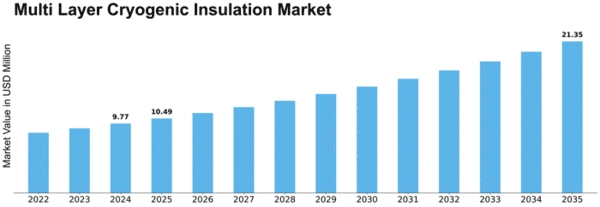


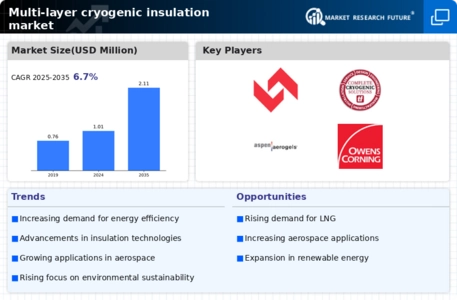
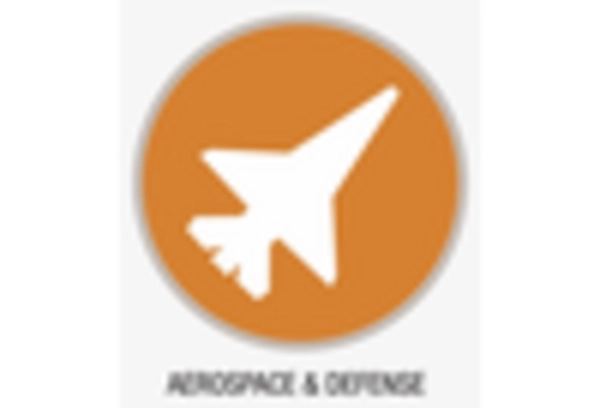
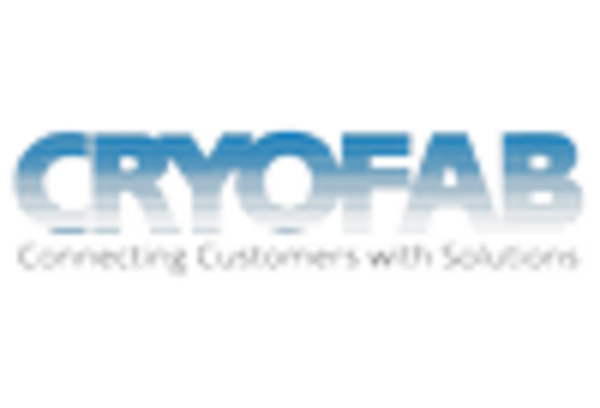


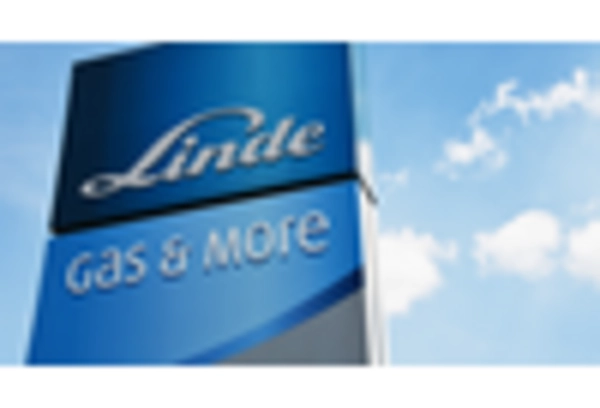
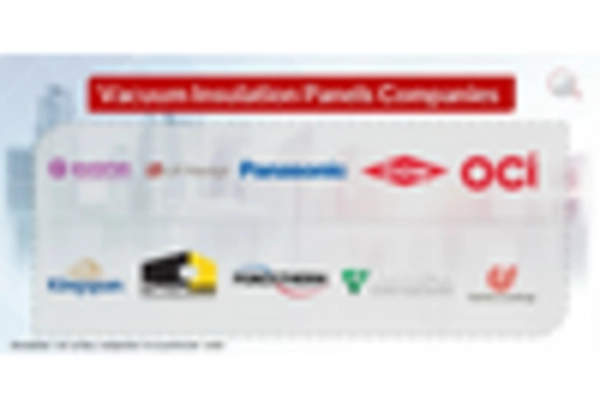









Leave a Comment